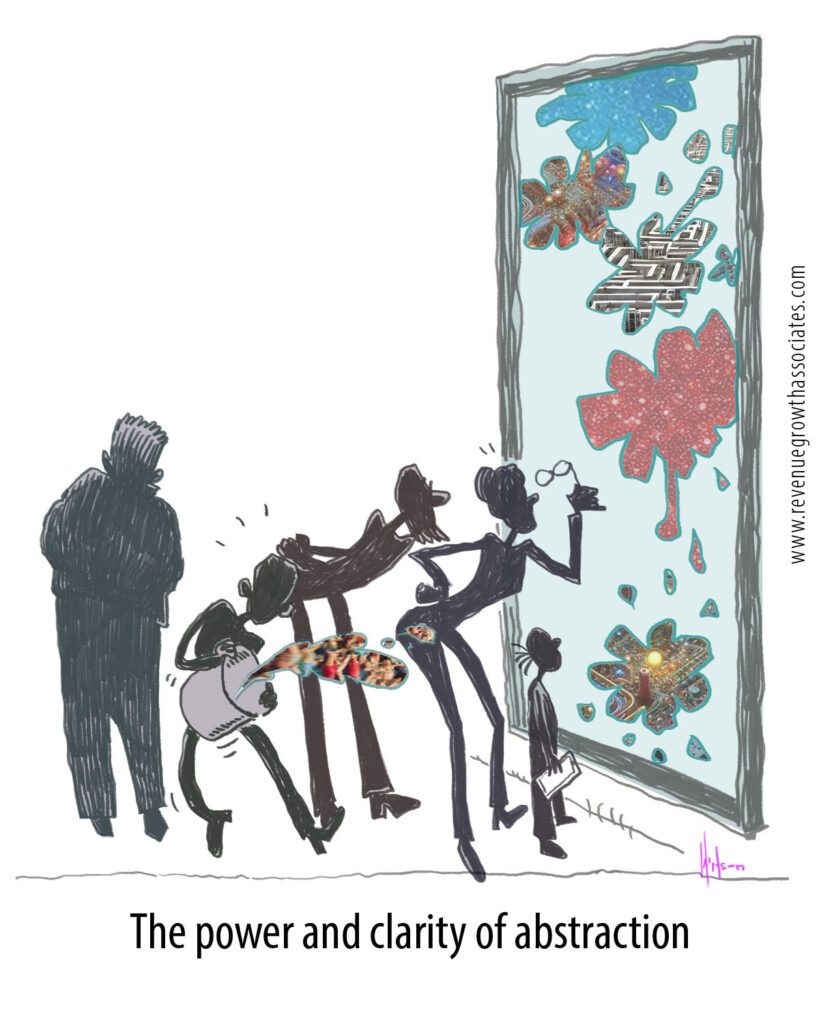When it comes to abstract art, you—as the person engaging with the art—are often left wondering what exactly the artist was trying to convey. Oftentimes, the artist has created something that will be interpreted and ‘experienced’ differently by each person who views it. But when it comes to integrating and driving the adoption of AI within the enterprise, where clarity and simplicity in user interfaces are paramount, abstraction takes on a different meaning. In this case, it can best be described as hiding the complex workings of an AI-enabled operating model behind a user-friendly interface. This is proving to be essential for enabling effective interactions between people and AI, and in driving effective change management and adoption.
Understanding the Users
The first step is understanding who specifically will be interacting with the AI, what tasks they are responsible for, and what kind of interface best supports their needs. Each role within an organization—whether it’s a sales representative, a sales manager, a senior executive, a marketer, or any other role—has unique requirements and tasks. The interface they use should align with these requirements, providing a tailored and efficient user experience.
Managing Complexity with Abstraction
As we build out enterprise AI tech stacks, the backend complexity inevitably grows. This includes models, agents, tools, data pipelines, guardrails, compliance and audit requirements, and interfaces to legacy systems, all interacting and upgrading continuously behind the scenes. However, this increasing complexity on the backend should be matched with a simplified frontend interface. This abstraction helps users perform their jobs without needing to understand or manage the technical intricacies, or learn all the interface details of new AI-enabled ‘tools’ as they are deployed.
A Case Study: Leading Global Industrial Software Provider
We successfully implemented this approach using a tool called Skuid to build the UI’s for all the roles on the GTM team for one of the world’s leading providers of industrial software. Skuid is just one example of a powerful no-code tool for building a graphical UI and connecting it to the backend architectural elements and workflows required to make it work. For the deliverables, we developed customized, dynamic, role-based user interfaces that presented information in a way that was intuitive for each specific job role. A critical step in this approach was to heavily involve those who would use the future system and tools in the design process. The goal was to develop a UI that aligned with their daily tasks and responsibilities (current and future), which also provided an opportunity to have re-engineering discussions about the overall set of business processes.
The ease of use provided through this GUI was well-received across the tech and business communities. It greatly facilitated change management by making new features or improved data presentations accessible without the need for extensive retraining or adjustment periods.
Applying Abstraction to AI
A similar approach is needed for AI. While understanding how to prompt AI is important, the native LLM prompt interface is not the most effective way to move forward for large-scale production implementations. The goal should be to create interfaces that make AI interaction non-intimidating and seamless.
The more we abstract the backend complexity, the easier it will be to deploy AI across various roles and functions within an organization. This approach not only enhances user functionality but also minimizes disruptions whenever backend systems are upgraded or improved.
By focusing on creating intuitive, role-based interfaces, we can ensure that the power of AI is harnessed effectively, making it a valuable tool that enhances productivity without adding complexity. As we move forward, the key will be to balance the sophisticated capabilities of AI with user-centric design principles that prioritize simplicity and ease of use.
Ready to Get a Little Abstract?
Don’t let the complexity of AI overshadow its potential. Abstraction is the key to unlocking AI’s power within enterprises. By creating user-friendly interfaces that abstract the complexities of all the back-end architectural elements, you can drive widespread AI adoption in a managed way and start maximizing the positive impact on your business. Want to learn more? Reach out to us today and let’s start abstracting your AI-enabled future.


